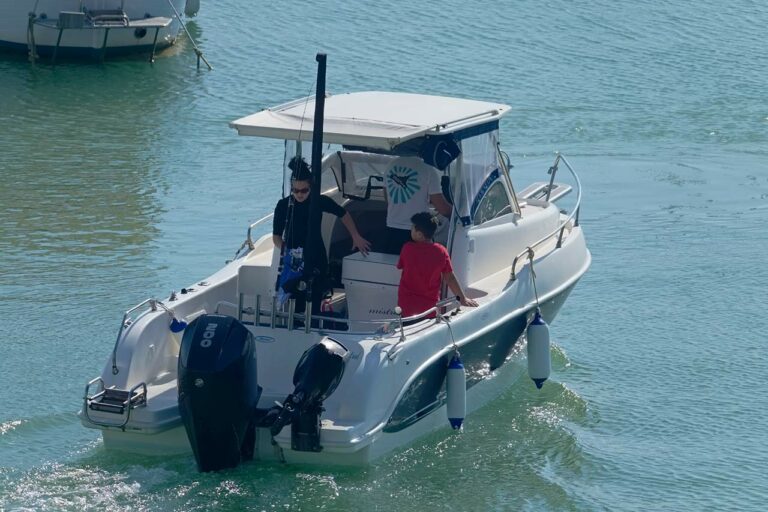Tactical Boots vs Hunting Boots: What’s The Difference?
Choosing the right footwear is vital when it comes to outdoor activities, especially in hunting or tactical situations. You need a pair of boots that provide protection, support, and comfort. A common question people face is: which is better for my needs – tactical boots or hunting boots?
Let’s kick into the key differences between these two types of functional footwear to help you decide which boot is the right boot for you.
Tactical Boots vs Hunting Boots: Key Differences
Tactical boots and hunting boots share some similarities, but each type of boot is designed for specific purposes and conditions.
Tactical Boots
Tactical boots, often used by law enforcement and military personnel, are designed for durability, flexibility, and agility. These boots are typically made from a combination of leather and synthetic materials, making them lightweight and breathable. The soles of tactical boots have a more aggressive tread pattern to provide better traction and support on various terrains. These boots might also come with features like reinforced toes and quick-lace systems for added protection and convenience.
Hunting Boots
Hunting boots are primarily crafted to provide protection and support during long treks through rugged environments. They’re often heavier and stiffer than tactical boots, offering better protection against deep brush and when walking off-trail. Insulation and waterproofing are common features in hunting boots due to the weather conditions usually encountered during hunting trips. The tread on hunting boots is designed to provide excellent traction and stability, especially during hunts in wet marshlands or swamps.
Tactical vs Hunting: A Quick Comparison
When comparing tactical boots to hunting boots, there are a few factors to consider:
Weight and Support
Tactical boots are generally lighter and more flexible than hunting boots, making them ideal for activities that involve a lot of movement.
Hunting boots are heavier and more rigid, offering the support and protection needed for extended periods of walking in rough terrain.
Traction and Grip
Both tactical and hunting boots have aggressive tread patterns for improved grip on various surfaces. The unique design of hunting boots, however, offers better stability and traction when walking off-trail.
Ankle Support
Tactical boots usually offer less ankle support than hunting boots. Although this makes tactical boots easier to move in, if you plan to walk through uneven terrain, hunting boots with better ankle support will provide more protection.
Waterproofing and Insulation
Hunting boots, being designed for potentially harsh weather conditions, typically come with waterproofing and insulating features standard.
Tactical boots, being more focused on flexibility and agility, don’t always include these features, so you should check the specs of the boots if you need them to be waterproof or insulated.
Understanding Tactical Boots
When it comes to tactical boots, protection is a top priority. These boots are designed to provide enhanced performance in various situations, particularly for police and military personnel. The materials used, such as synthetic materials, are more durable than leather and often include additional features like advanced wicking or waterproofing. This ensures that your feet stay protected in harsh conditions without compromising performance.
One key aspect of tactical boots is their lightweight construction. One thing you’ll likely notice about them is that they’re comfortable to wear for extended periods, allowing you to move swiftly and efficiently. The weight can vary by model, but generally, tactical boots are lighter than traditional boots, making them the perfect option for those on their feet all day.
Ankle support is another big component of tactical boots. Given the nature of the job, these boots need to offer excellent support to reduce the risk of injury and ensure stability in uneven terrain. This support not only improves comfort but also enhances the boot’s overall performance.
Key Features of Tactical Boots
When it comes to tactical boots, there are several key features you should look for in order to get the most out of your gear:
Material
One of the top components in a tactical boot is the material. You’ll want a boot made from durable materials such as leather, nylon, and synthetic fabrics, which can withstand rough terrain and harsh conditions. These materials are generally resistant to wear and tear, ensuring your boots last for a long time.
Design
Tactical boots are specifically designed to keep you comfortable and protected during high-intensity situations. They usually feature lightweight, breathable designs to prevent your feet from overheating and becoming uncomfortable. They may have a side-zip or pull-on design for easy on and off access, especially useful in time-sensitive situations.
Durability
In tactical situations, you need footwear that can handle the demands you place on them. Tactical boots are built for longevity and frequently undergo rigorous testing to ensure they can hold up under the harshest conditions. Reinforced stitching, strong lacing systems, and resistant outsoles contribute to the boot’s overall durability.
Waterproofing
Wet and muddy conditions are no match for a good pair of tactical boots. Many models offer waterproof technology or water-resistant materials to keep your feet dry and comfortable in wet environments. This feature is especially important if you’re trekking through damp terrain or plan to spend an extended amount of time outdoors.
Ankle Protection
Tactical boots generally come in various heights, but a mid to high-top design is ideal for providing optimal ankle support and protection. This added support will help you maintain your footing in unstable terrain and reduce the risk of injury from twists and sprains.
Style
While it may not be top of mind, the style of tactical boots can still be a consideration. These boots are available in different color schemes and patterns, from black or coyote brown to camouflage. Choose a style that suits your preferences and the environment you’ll be operating in.
Specific Uses of Tactical Boots
Tactical boots are a versatile piece of footwear, designed to provide comfort, durability, and support in various demanding scenarios. They’re commonly used in rugged environments and for outdoor activities where durability and protection are absolutely essential.
Military Service
Tactical boots are commonly worn by military personnel during training and operations. They’re designed to offer superior support and comfort for soldiers who need to move quickly and easily across diverse terrains. Their lightweight construction and flexibility make them ideal for extended wear during military exercises or combat situations.
Law Enforcement
Police officers and other law enforcement professionals rely on tactical boots for their various duties. These boots ensure comfort and support during long shifts and provide exceptional traction when chasing suspects or navigating challenging environments. The slip-resistant soles and reinforced materials help officers stay safe while performing their jobs.
Rugged Environment
If you find yourself in rugged environments where you need to navigate through uneven terrains or slippery surfaces, tactical boots are the way to go. Their sturdy construction and aggressive tread pattern provide excellent traction on a variety of surfaces, from rocky trails to muddy fields. These boots are built to last, so they can withstand the wear and tear of being outdoors in harsh conditions.
Outdoor Activities
Tactical boots aren’t only for professional use, they’re also great for various outdoor activities. One of these activities is hunting. When outdoors, these boots can provide the right support and protection you need. Their breathable materials help keep your feet comfortable during prolonged periods of activity, and their sturdy construction can withstand the challenges of the great outdoors.
Understanding Hunting Boots
Where tactical boots are designed for comfort and protection in fast-moving situations, hunting boots are designed to provide you with a comfortable and protective experience when you’re out in the wild, stalking your prey or waiting for the perfect shot.
Hunting boots prioritize long-lasting durability, which is especially crucial if you’re trekking through rough terrain and harsh conditions. They’re typically made from hard leather or synthetic materials and often have replaceable parts, like the outsole and insole, to ensure lasting comfort and protection for extended periods.
A key aspect of hunting boots is their focus on insulation and waterproofing. When you’re out in the woods or in the mountains, you need reliable footwear to keep your feet warm and dry. That’s why hunting boots usually come with generous insulation and a waterproof outer layer, providing you with the confidence to tackle even the most challenging weather conditions.
Key Features of Hunting Boots
As the name implies, hunting boots are specifically designed with the needs of hunters in mind, offering unique features that set them apart from other outdoor footwear. Here are some components that distinguish them from other boots:
Material
The material of hunting boots plays a significant role in their durability and functionality. Most hunting boots are made of either leather or synthetic materials. Leather boots offer a rugged, classic look and are highly resistant to abrasion. Synthetic materials tend to be lighter and more breathable, as well as faster to dry when wet. Some boots combine these materials to offer the best of both worlds.
Waterproofing
A great pair of hunting boots should be waterproof to keep your feet dry in wet conditions or when crossing water. Waterproof boots often feature advanced technology like GORE-TEX or other proprietary waterproofing systems. Keep in mind that waterproof boots are not the same as water-resistant boots, which can only handle light moisture.
Insulation
Hunting seasons can vary in temperature, and having the right amount of insulation is crucial for comfort and warmth. Hunting boots come with different insulation levels, measured in grams, to cater to different temperatures. Boots with 400 grams of insulation, for example, will serve you well during early-season hunts, while boots with 1000 grams or more are designed for extreme cold conditions.
Design
Unlike hiking or tactical boots, hunting boots are built with the hunter specifically in mind. One of their distinguishing design features is quiet, anti-slip soles that allow for silent movement in the field. Some hunting boots are even designed for specific game, like upland boots, which feature a more aggressive outsole for traction on uneven terrain. Many hunting boots come in camouflage patterns that help you blend into your surroundings.
Specific Uses of Hunting Boots
Hunting boots are designed with one main goal in mind: to provide you with the support, protection, and comfort you need while pursuing game in various terrains and weather conditions. They are literally built for hunting.
Waterproofing and Insulation
When it comes to waterproofing and insulation, there are some key differences between tactical boots and hunting boots. Waterproofing is crucial for both types of boots, as keeping your feet dry is essential for comfort and preventing blisters. However, the level of waterproofness and insulation required can vary depending on the specific activities and weather conditions you’ll encounter.
Waterproofing and Insulation in Tactical Boots
Generally speaking, tactical boots prioritize quick-drying and water-resistant materials as they are designed for fast-paced, versatile scenarios. While water resistance is important in tactical boots, insulation may not be a critical feature since these boots are often used in urban and moderate-temperature environments.
Waterproofing and Insulation in Tactical Boots
Hunting boots, on the other hand, are designed for more varied and potentially harsher weather conditions. Due to this, they tend to incorporate higher levels of waterproofness and may also include insulation for colder climates.
Price Comparison
When comparing tactical boots and hunting boots, prices can vary depending on the brand, materials used, and specific features. Generally, tactical boots can be found at more affordable prices, starting at around $70, while hunting boots start out closer to $100. Here’s a breakdown of what you can expect by price range for each boot type:
Tactical Boots
- Budget-friendly options ($70-120): In this price range, you’ll find decent quality tactical boots that may be sufficient for casual use or less demanding situations.
- Mid-range options ($120-200): Expect more durable materials, better support, and additional features like waterproofing or side zippers.
- High-end options ($200+): In this tier, you’ll find premium tactical boots offering superior performance, durability, and comfort.
Hunting Boots
- Budget-friendly options ($100-150): Affordable hunting boots often sacrifice some durability and features, such as insulation, for the lower price tag.
- Mid-range options ($150-300): In this range, you’ll find dependable hunting boots with better materials and technology, suitable for more difficult terrains and weather conditions.
- Expensive options ($300+): Top-quality hunting boots from premium brands provide superior comfort, durability, and performance even in the harshest conditions.
Overall Durability and Protection
When it comes down to it, when choosing between a tactical boot or a hunting boot, you probably want the boot that’s going to get the job done best for the longest possible time. In this arena, both tactical boots and hunting boots have their unique strengths.
Tactical boots are known for their tough construction and ability to withstand harsh conditions, such as those you might encounter during military operations, police duties, or rescue missions. They often feature reinforced materials like leather, nylon, and synthetic uppers, as well as durable rubber outsoles that are resistant to abrasion and puncturing.
Hunting boots are built specifically to handle the demanding conditions you’ll face while hunting, including wet and muddy terrain, uneven trails, and even rocky or steep inclines. They feature waterproof linings, insulation for warmth, and sturdy outsoles that offer traction and grip on various surfaces. They too are built to last.
If you want your tactical or hunting boots to last you for some time, your primary focus should be on the type of environment and activities you’ll be engaging in. If you need boots with exceptional durability and protection for intense work or rigorous outdoor adventures, tactical boots can take a beating, offering the foot protection you need. If you’ll be tracking prey in wet or rugged landscapes with intense weather conditions, hunting boots are designed for these specific purposes, providing the required insulation, weather protection, and overall performance you’ll need.







